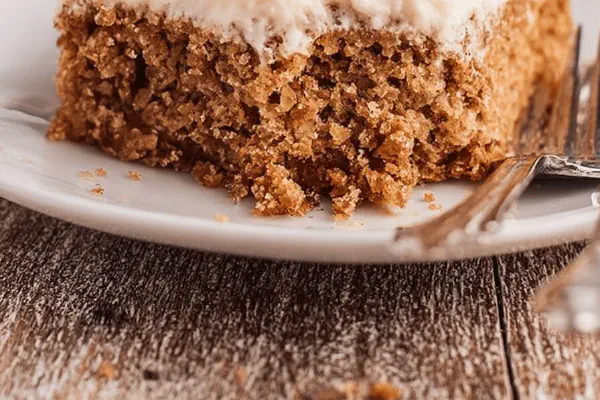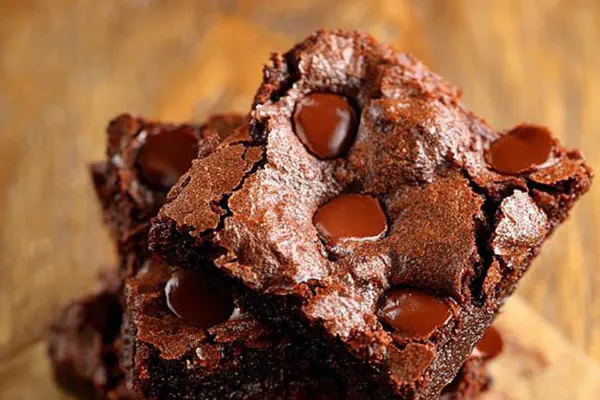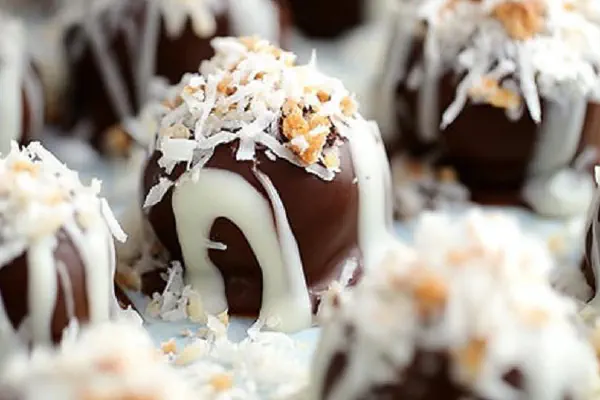Chunky Oatmeal Cake

E
By Emma
Certified Culinary Professional
•
Recipe tested & approved
Oats swollen in boiling water, soaked not cooked; cake rich with browned sugars and spices, flour swapped for whole wheat for a nuttier bite. Frosting thickened low and slow like a pudding, then whipped with buttery richness. Baking signals: edges pulling, center shaky but not wet. Frosting spreads dense, fluffy, sweet with a hint of vanilla. Pure texture delight. Balanced sweet and earthy. Good for those forgiving kitchen moments. Don’t overbeat or curdle the mix. Watch the pudding’s jiggle to avoid gloopy mess. Simple swap: unsalted butter instead margarine for less trans fats. Cinnamon adds distant warmth, nutmeg a hint of surprise. Just enough to lift oat’s humble flavor into something worthy of the best slice you ever cut loose.
Prep:
25 min
Cook:
45 min
Total:
Servings:
12 servings
#American baking
#oatmeal desserts
#whole wheat recipes
#brown sugar cake
#pudding frosting
Oatmeal cake isn’t just texture; it’s a sensory journey. You start wet oats swelling quietly, a kind of whispered swell, creamy underfoot in a thick batter dense with spices and sugar’s caramel whispers. Brown sugar folded in, eggs careful — not whipped to death, something light and yielding. Baking that reveals the thin crackle of cake edges relaxing away from the pan. Wet, steady jiggle in the center is your green light to pull. Frosting simmers to pudding, slow bubble whispers, patient notes you can catch only when you’re looking. Butter and shortening creamed, then whipped with the cooled pudding—air trapped in fat, pearly clouds forming. Spread thick, luscious, sweet vanilla teasing the warm cinnamon cake beneath. A happy mess, rustic, inviting. Not for perfectionists but for weekend warriors willing to feel the batter, watch the bubble, trust sight and touch over numbers.
Ingredients
- 1 cup rolled oats
- 1 cup boiling water
- 1/2 cup shortening
- 1/2 cup unsalted butter
- 1 cup granulated sugar
- 1 cup packed light brown sugar
- 3 large eggs
- 2 cups whole wheat flour
- 1/2 teaspoon salt
- 1 teaspoon ground nutmeg
- 1 teaspoon baking soda
- 1 teaspoon ground cinnamon
For frosting===
- 1/3 cup all-purpose flour
- 2 cups granulated sugar
- 2 cups milk
- 1/2 cup unsalted butter
- 1/4 cup vegetable shortening
- 1 teaspoon vanilla extract
About the ingredients
Swapping whole wheat flour makes the crumb nuttier, more dense. You can’t trade oats for instant; too soft, cake loses titanic chew. Unsalted butter replaces margarine for cleaner fat flavor, less trans fat. Shortening preserves moisture, but butter adds depth. Brown sugar choice determines caramel notes; light is classic, dark madly intense. Use fresh spices—nutmeg can turn blah if old. Milk in frosting can be whole or 2%, lower fat shifts texture thinner, so reduce cooking milk by a few tablespoons accordingly. If clumps form in pudding frosting, whisk in some warm milk to loosen. Overmixing batter creates gluey cake. Overcooking frosting dries it out, so watch carefully. Grease pan liberally, oats stick stubbornly. Use parchment liner for foolproof removal. Eggs at room temperature emulsify better, cold eggs cause curdling.
Method
Cake
- Heat oven 325F. Don’t preheat too early or waste energy; wait till oats soak done.
- Pour boiling water on oats in small bowl. Cover tight, let thicken for 20 minutes. Look for swollen, soft but not soupy oats. They should be creamy, almost porridge-like, no grainy aftertaste.
- Meanwhile, use electric mixer medium speed. Cream shortening, butter, white sugar, brown sugar till light, fluffy. Pause to scrape down sides so fats integrate fully—skip this, and your batter lumps.
- Add eggs one at a time, beating each till combined but not foamy. Too vigorous, eggs cook prematurely, drying cake.
- Sift together whole wheat flour, salt, nutmeg, baking soda, cinnamon. Why sift? Avoid dense patches, break clumps.
- Switch mixer to low, add dry mix in batches. Overmixing triggers gluten toughness; slow and steady wins here.
- Uncover oats, fold into batter by hand or low mixer just till combined. Gritty oats meeting fine flour creates texture. Too rough mixing here creates dry pockets.
- Grease a 9x13 pan well—spray and grease with butter or shortening. Batter thick, dense; smooth top with spatula, scrape sides clean.
- Bake 40–45 minutes. Watch cake edges. When gently pulling from pan, and center jiggles slightly but not wet—test with wooden skewer, crumbs moist but no batter, you’re golden.
- Remove from oven; leave in pan until slightly warm to harden structure before frosting. Too hot cake melts frosting, runny mess.
Frosting
- While cake bakes, whisk flour and sugar in a 2 to 2 1/2 quart saucepan, no lumps. Prevent flour balls or sticky lumps by dry whisking first.
- Slowly add milk while whisking non-stop. If poured fast without stirring, flour clumps and ruins texture.
- Cook medium-low heat. At first whisk sporadically, then nonstop once thickening begins—sound changes from liquid sloshing to thick glugging. Take your time—rush causes skin or lumps.
- Testing thickness: scrape wooden spoon across pan bottom; mixture parts and fills back slowly after about 2 seconds. Like thick pudding with slow, persistent jiggle, not gelatin wobble.
- Remove from heat. Pour into heatproof bowl to cool. Crucial: stir occasionally to stop skin formation. Skin ruins frosting smoothness.
- Refrigerate briefly if impatient but off heat cooling with stirring is best.
- Once cooled, use stand mixer with paddle to cream butter and shortening for about 2 minutes. Butter softened, not melted. Fat temperature matters here.
- Powder cooled flour-sugar-milk mix in gradually. Switch to whisk attachment for 10 minutes high speed till thick, fluffy texture—a good workout for mixer and patience.
- Watch frosting change from dull, paste-like to cloud-soft. That’s your cue to stop.
- Once cake cooled completely, spread frosting generously top and sides. Heavy frost keeps cake moist longer.
- Cut, serve. Try to wait 30 min once frosted to let flavors marry, but no promises you'll resist.
Cooking tips
Start oats soaking first to avoid boiling the batter or overmixing spots. The oatmeal step thickens batter without separate cooking. Creaming fats and sugars well is crucial; skipped, cake is dense and dry. Eggs go in one at a time to stabilize batter. Separate dry mix sifting prevents clumps, stopping gummy patches. When folding oats into batter, use gentle strokes; overdoing spoils structure. Baking signals: crackling at edges, internal jiggle, toothpick with moist crumbs. Frosting needs constant whisking once thickening starts; multitasking or distractions invite lumps or burnt spots. Cooling frosting in a glass bowl keeps heat even, avoid rapid chilling or skin forms. Be patient when whipping frosting—rushing leads to dull, dense paste. Heavy spreading allows cake to soak up moisture over time. Practice tactile and visual cues over timer alone—you learn more that way. Clean mixer paddle between creaming fats and folding in pudding or texture toughens.
Chef's notes
- 💡 Start soaking oats first. Water boiling hot, small bowl covered tight. Wait full 20 minutes till oats swell; creamy, not soupy. Texture shift key here. Don’t rush or cake loses chew density. This sets cake moisture profile before fats come in.
- 💡 Cream shortening and unsalted butter together medium speed. Scrape bowl sides often. Miss this, batter lumps. Watch sugar dissolve into fat till blend looks fluffy, light in color. Overbeating eggs here causes tough, dry crumb. Beat one egg at a time carefully.
- 💡 Sift dry ingredients—whole wheat flour, salt, nutmeg, baking soda, cinnamon. No clumps, or you get dense pockets. Add flour mix slowly at low mixer speed. Overmixing triggers tough gluten, ruins softness. Fold oats gently last; rough mixing drys texture.
- 💡 Grease pan thoroughly. Oats stick stubbornly. Spray then butter smear works well, some use parchment liner. Batter thick, spread evenly, scrape spatula around edges. Bake 40 to 45 minutes. Watch cracks at edges pull. Center jiggle like soft pudding—not wet, just slightly shaky.
- 💡 Make frosting while cake bakes. Whisk flour, sugar dry first to avoid lumps. Add milk slowly whisking, cooking low-medium heat. Early whisk sporadic then nonstop once thickened. Check by wooden spoon scrape; mix parts, fills back slowly after 2 seconds means pudding jiggle right. Cool with stirring prevents skin.
Common questions
Can I swap whole wheat flour for all-purpose?
Yes but crumb changes. Less nutty, lighter texture. Watch bake time; may shift slightly. Oats stay same. Some lost chew happens with all-purpose.
How to fix frosting lumps?
Add warm milk whisk quick. If lumps persist, strain. Stir cooling frosting prevents skin. Speed overheat—causes drying, clumps. Slow cook, patient whisking wins here.
What if cake is dry?
Likely overmix or overbake. Oats soak too short can dry crumb too. Butter replaces margarine here to keep moisture. Also check oven temp accuracy; too hot triggers dryness fast.
How best to store leftovers?
Wrap airtight. Fridge keeps moist longer. Room temp drys frosting crust. Freeze wrapped well, thaw slow in fridge to avoid sensory shock. Re-spread frosting if hardened on edges.



